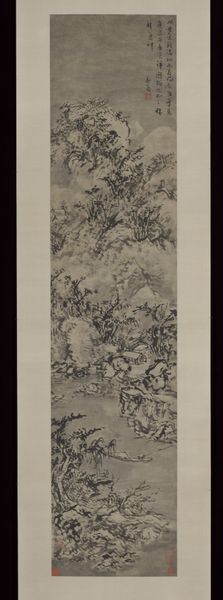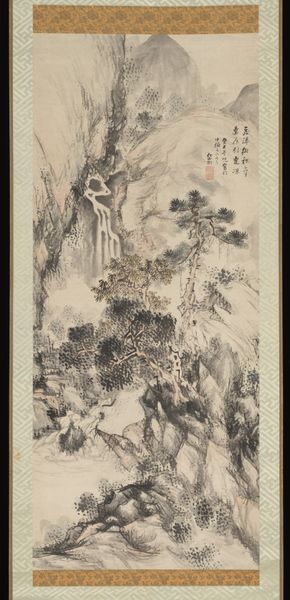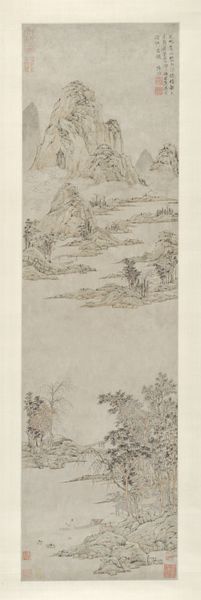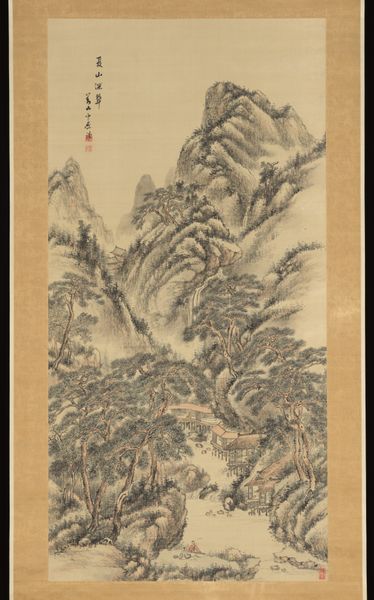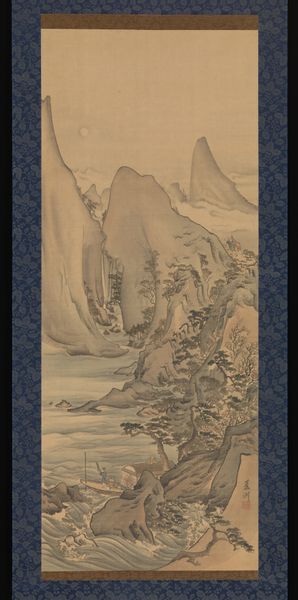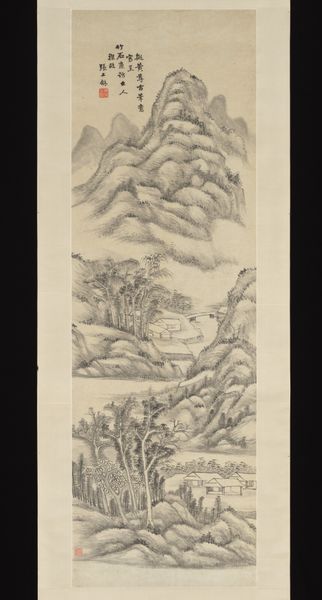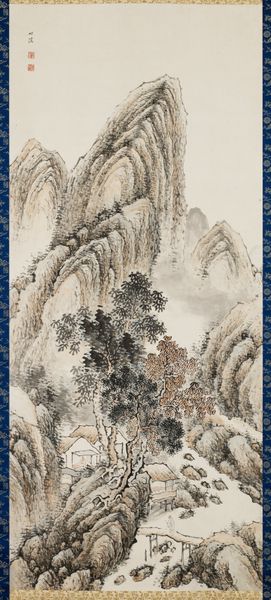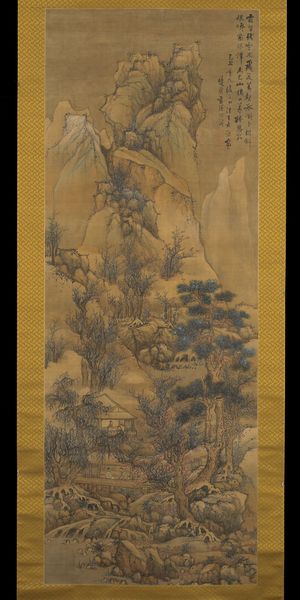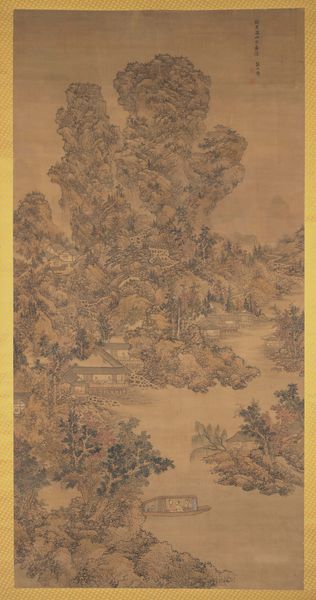
After Ike Taiga’s “Horse Market in a Mountain Village” 1800 - 1833
0:00
0:00
Dimensions: Image: 57 5/8 × 23 1/16 in. (146.4 × 58.5 cm) Overall with mounting: 85 3/8 × 29 1/4 in. (216.9 × 74.3 cm) Overall with knobs: 85 3/8 × 31 11/16 in. (216.9 × 80.5 cm)
Copyright: Public Domain
Editor: This hanging scroll is Watanabe Kazan's "After Ike Taiga's 'Horse Market in a Mountain Village,'" created sometime between 1800 and 1833. It's done in ink, and it feels like a vast, almost overwhelming landscape, a real sense of depth and scale achieved with such delicate washes of ink. What do you see when you look at this, especially considering it is a later copy? Curator: The intrigue lies precisely in that layering of interpretation. Kazan isn't simply replicating Taiga's work. Note how the formal structure utilizes negative space—the emptiness is as crucial as the ink. How the ink density shifts creating varied form, volume and texture; from the sharp lines defining the architecture to the diluted tonality modelling the rugged peaks. Editor: I notice that some areas are quite detailed, and others are very suggestive, almost blurred. Curator: Precisely. Kazan's skill resides in this command of brushwork; line, texture, and tonal gradation define space. Observe the dynamic between detail and suggestion. The buildings are rendered with precise strokes that contrasts the gestural modelling of the rocks. Consider how this tension contributes to the overall dynamism. What do you observe about the composition? Editor: It seems to rise, directing my gaze upwards from the foreground toward the mountain peak. There’s also a text inscription above the mountains. Curator: Indeed. The carefully considered organization leads the eye, but resist imposing a singular interpretation. Allow the interplay of line, tone, and space to resonate. We begin with form. Does that clarify Kazan’s compositional strategy? Editor: Yes, that’s fascinating. I hadn’t considered the active emptiness before. Thinking about form encourages looking closer at the details and brushwork. Thanks for pointing this out! Curator: Indeed. Formalism enriches experience. Examining formal strategies reveals complexities, even when viewing an image we think we know.
Comments
No comments
Be the first to comment and join the conversation on the ultimate creative platform.
